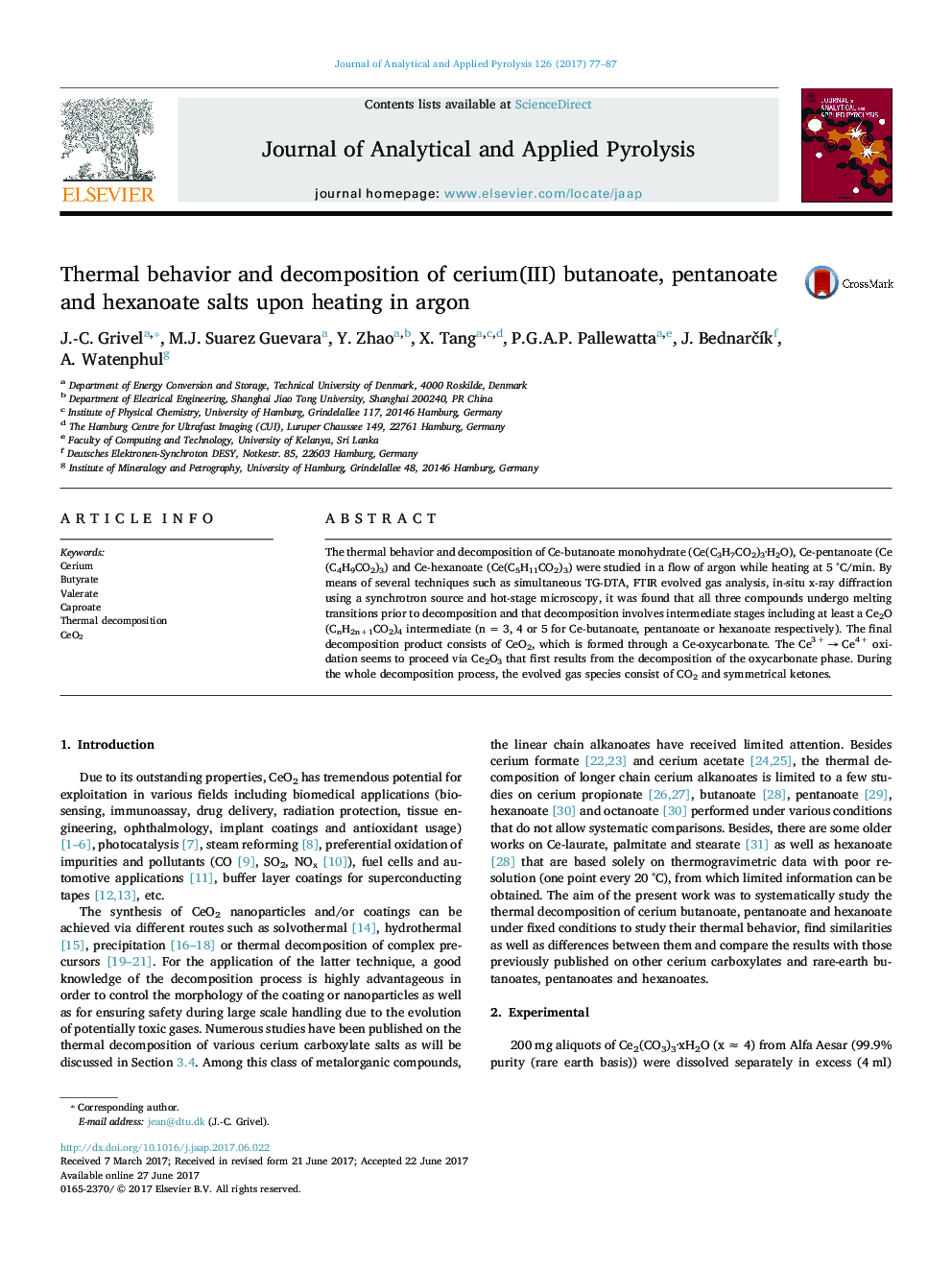| Article ID | Journal | Published Year | Pages | File Type |
|---|---|---|---|---|
| 5134660 | Journal of Analytical and Applied Pyrolysis | 2017 | 11 Pages |
â¢The thermal decomposition of cerium butanoate, pentanoate and hexanoate has been studied in Ar.â¢All compounds present transitions including melting prior to decomposition.â¢Gas release in the molten state results in irregular mass loss.â¢CO2 and symmetrical ketones are the main evolving gas species.â¢Ce2O(CnH2n+1CO2)4 and Ce2O2CO3 intermediate are detected before CeO2 formation.
The thermal behavior and decomposition of Ce-butanoate monohydrate (Ce(C3H7CO2)3·H2O), Ce-pentanoate (Ce(C4H9CO2)3) and Ce-hexanoate (Ce(C5H11CO2)3) were studied in a flow of argon while heating at 5 °C/min. By means of several techniques such as simultaneous TG-DTA, FTIR evolved gas analysis, in-situ x-ray diffraction using a synchrotron source and hot-stage microscopy, it was found that all three compounds undergo melting transitions prior to decomposition and that decomposition involves intermediate stages including at least a Ce2O(CnH2n+1CO2)4 intermediate (n = 3, 4 or 5 for Ce-butanoate, pentanoate or hexanoate respectively). The final decomposition product consists of CeO2, which is formed through a Ce-oxycarbonate. The Ce3+ â Ce4+ oxidation seems to proceed via Ce2O3 that first results from the decomposition of the oxycarbonate phase. During the whole decomposition process, the evolved gas species consist of CO2 and symmetrical ketones.
